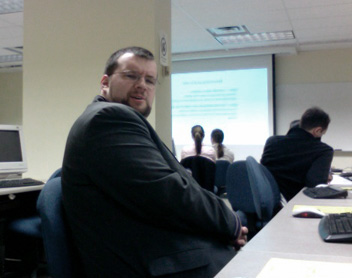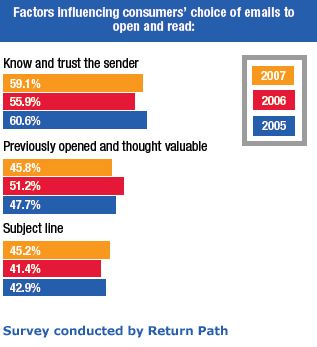Seinfeld jokes aside... It is very important for arts organizations to remain masters of their domains.
We were recently contacted by a relatively large arts organization that was having trouble accessing their Web site. Each time they tried to access the site, they encountered a message explaining that their domain name registration had expired and that they would have to bid to regain control of the domain.

I thought it would be helpful to explain what a domain name is and why you should never let yours expire.
What is a domain name?
Every site has an Internet Protocol (IP) address that looks like this: 206.187.23.211. However, it would be very cumbersome to always have to say: "Hey, check out my Web site! It's http://206.187.23.211." That's where a domain name comes into play.
A domain name is the memorable name used by most people to identify your Web site. For instance, if you go to http://204.194.30.217, you will get the Artsnet Web site. But it's much easier to ask people to visit "Artsnet.org" than "204.194.30.217."
To register a new domain name, you must use an officially licensed registrar, such as Network Solutions.
What happens when a domain name expires?
When a domain name expires, it is officially up for grabs. If someone were to buy your domain name upon expiration, they would have complete control of that Web address. Basically, three bad things could happen:
- They could keep it and never return control to you.
- They could charge you an exorbitant amount of money for the domain name.
- They could redirect your old Web address to any site or use the address to host a malicious site. Your Web visitors would no longer see your schedule of upcoming performances; rather, they might see pornography - or worse - a George W. Bush fan site!
In fact, there are individuals who earn a living snatching up expired domain names and charging extreme prices for the original owners to regain control.
How does one remain master of his/her domain?
- ALL arts organizations should know the name and contact information of their site's domain name registrar. If you don't know this information, you can use a lookup service. For instance, go to the Network Solutions WhoIs page and enter a Web address in the search field. To see the registrar information, click the link labeled "Show underlying registry data for this record."
- Set some type of automated reminder for yourself in advance of the domain name expiration date. Many registrars offer this feature, but it's always good to set up your own reminders so you don't miss an alert that has fallen prey to your spam folder.
- Create a technology binder for your organization that contains all important information about your organization's internal and external tech operations. This binder should contain information about your Web site (domain registrar, hosting provider, administrative access, etc.), as well as all software and hardware license and maintenance details. TechSoup provides a bit more information on this subject.
If you need assistance obtaining your domain name registrar information, please feel free to contact us.
(Please Note: The 'Seinfeld' image above was used without the permission of Sony Pictures. If they send me a cease and desist order, I will gladly comply. I will also brag about my first official cease and desist order.)
 Now in its 19th year, the MUSE awards competition recognizes outstanding achievement in museum media. The competition is an activity of the Media and Technology Standing Professional Committee of the American Association of Museums.
Now in its 19th year, the MUSE awards competition recognizes outstanding achievement in museum media. The competition is an activity of the Media and Technology Standing Professional Committee of the American Association of Museums. 





 Josh looks please to be learning about usability.
Josh looks please to be learning about usability.


 The U.S. Library of Congress has formed a partnership with the photo-sharing site
The U.S. Library of Congress has formed a partnership with the photo-sharing site 
